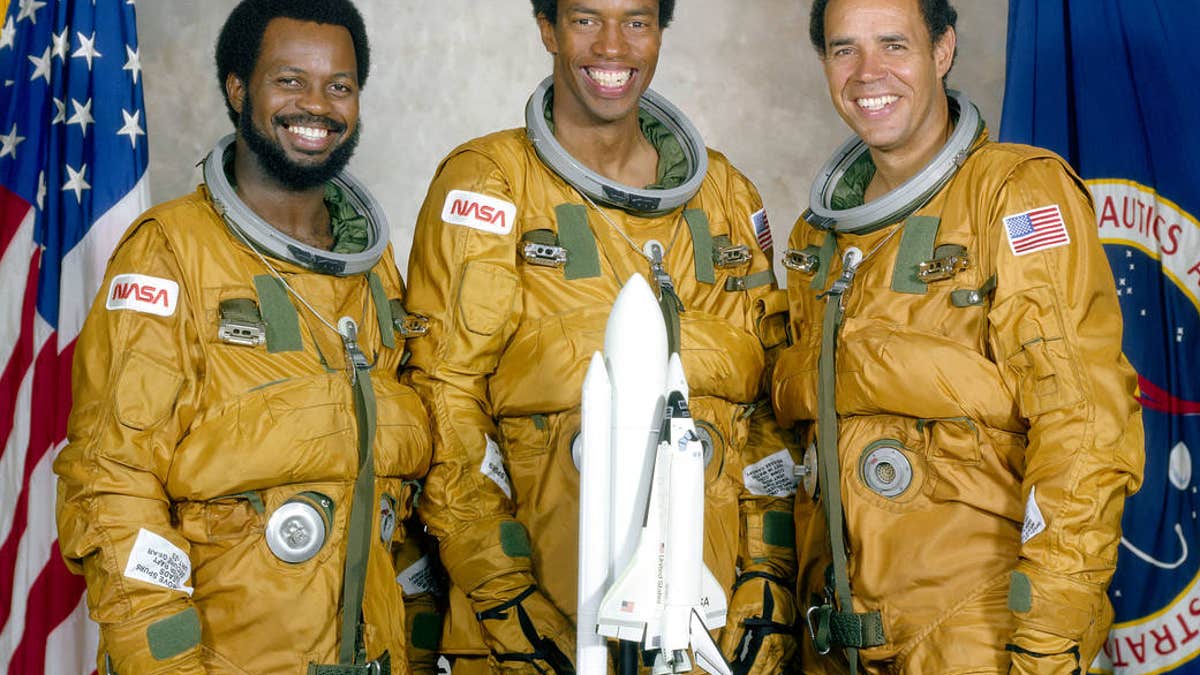NASA announces graduation of first astronaut class under the Artemis program
The 13 astronauts completed more than two years of training and were selected from a pool of more than 18,000 people.
In 1989, astronaut Fred Gregory made history when he became the first African-American to command a NASA mission, but he paid little attention to the headlines that he made.
An Air Force officer who flew 550 combat missions as a helicopter pilot in Vietnam, Gregory was a test pilot before joining the astronaut corps in 1978.
Speaking to Fox News prior to the Feb. 24 premiere of the Smithsonian Channel documentary “Black in Space: Breaking the Color Barrier,” Gregory said that at the time NASA was keen to extend its talent pool.
“If you look at the astronaut corps prior to the space shuttle program it was white European male,’ the former astronaut said. “They made a conscious effort to diversify the group of astronauts for the space shuttle.”
NASA ASTRONAUTS WILL RETURN TO SPACE FROM US SOIL 'BEFORE SUMMER': PENCE
Of the 35 astronauts in the group, 15 were test pilots and 20 were mission specialists, which included engineers, scientists, mathematicians and doctors. The group also included Guion “Guy” Bluford, who became the first African-American in space, and Sally Ride, who became the first American woman in space.

On Jan. 16, 1978, NASA announced its first astronaut class in nine years. Dr. Ronald McNair (left), Guy Bluford (center) and Fred Gregory (right) were among those selected, the first African Americans in NASA's astronaut program. (NASA)
Another member of the group was Ron McNair, who perished during the launch of the space shuttle Challenger in 1986.
Gregory’s first trip to space was as the pilot of shuttle mission STS-51B in 1985. Four years later he became the first African-American to command a NASA mission when he led STS-33. He was also the commander of STS-44 in 1991.
The former astronaut told Fox News that the historic nature of the missions was not at the forefront of his mind. “We became aware of the fact that Guy was the first African-American to fly [in space], we became aware that I was the first African-American to command … when we saw it in the papers,” he said. “It was not an issue, it was not a concern.”
NASA ASTRONAUT EYES MOON JACKPOT, RANGING FROM SPACE MINING TO POLAR ICE
“That’s something that a certain group of people think is important – for me, it’s not important at all,” he added.
The astronaut went on to log 455 hours in space and later became the first African-American to serve as NASA’s deputy administrator.
Now 79, Gregory told Fox News that his interest in aviation was piqued during his childhood in Washington, D.C., where his parents were educators. Among his parents’ many friends was one particular group that sparked his interest. “I guess I would have to go back to when I was a very young kid, probably when I was 5 or 6,” he told Fox News. “One of the groups of friends that my parents had was a group of pilots – I remember sitting at their feet listening to them talk about flying.”
The young Gregory eventually accompanied one of the pilots when their plane was taxiing on the runway. He had caught the flying bug.
SPACE CAPSULE SOARS IN DRAMATIC ABORT TEST
He describes his eventual space career as an evolution from his role as an Air Force pilot. “When I was in my 30s, I just happened to see an advertisement for the space program,” he said. “It was more of an evolution for me, as I moved from one career to another.”
However, he did receive encouragement from an illustrious American aviator. His father was friends with many members of the iconic Tuskegee Airmen, including their commander, Ben Davis, and the Air Force general called Gregory when the young man was considering a space career. “Gen. Davis called me and told me that I should apply, not just for myself but for the Tuskegee Airmen.” he said.
The next few years are set to be important ones for NASA, as the space agency prepares to put American boots on the moon once again and eyes future crewed missions to Mars.
Gregory said that he is encouraged by President Donald Trump’s proposal to significantly increase NASA’s annual budget. However, he is more excited by the prospect of crewed missions to Mars than to the moon. “I was raised in a family that said ‘once you have done it, then do something else,’” he told Fox News. “Returning to the moon, 40 years later, to me, it’s not exciting – but for other generations, it’s new to them.”
NASA ASTRONAUT’S OVERJOYED DOG WELCOMES HER HOME AFTER 328-DAY SPACE MISSION IN HEARTWARMING VIDEO
NASA plans to use a "Gateway," a space station orbiting the moon, for future lunar exploration. The Gateway vessel will be used to support the transfer of crews and supplies into a moon lander.
However, Gregory thinks a Gateway vessel should be positioned elsewhere to better facilitate distant exploration, such as Mars missions. “The Gateway, for me, would have to be at the Sun/Earth Lagrange point,” he said. “The Gateway would be a transition point between Earth and a distant planet.”
Space.com describes Lagrange points as “parking places in space,” locations where the gravitational forces to two large bodies such as the Earth and the Sun equals the centrifugal force “felt by a much smaller third body.”
Gregory believes that NASA could use the Lagrange to significantly reduce the estimated eight-month journey to Mars. “I would say that, from the Gateway, you would have a new system of propulsion that would get you there in two weeks,” he told Fox News.
CLICK HERE TO GET THE FOX NEWS APP
“Black in Space: Breaking the Color Barrier,” airs on Smithsonian Channel at 8 p.m. ET/PT on Feb. 24.
Follow James Rogers on Twitter @jamesjrogers

